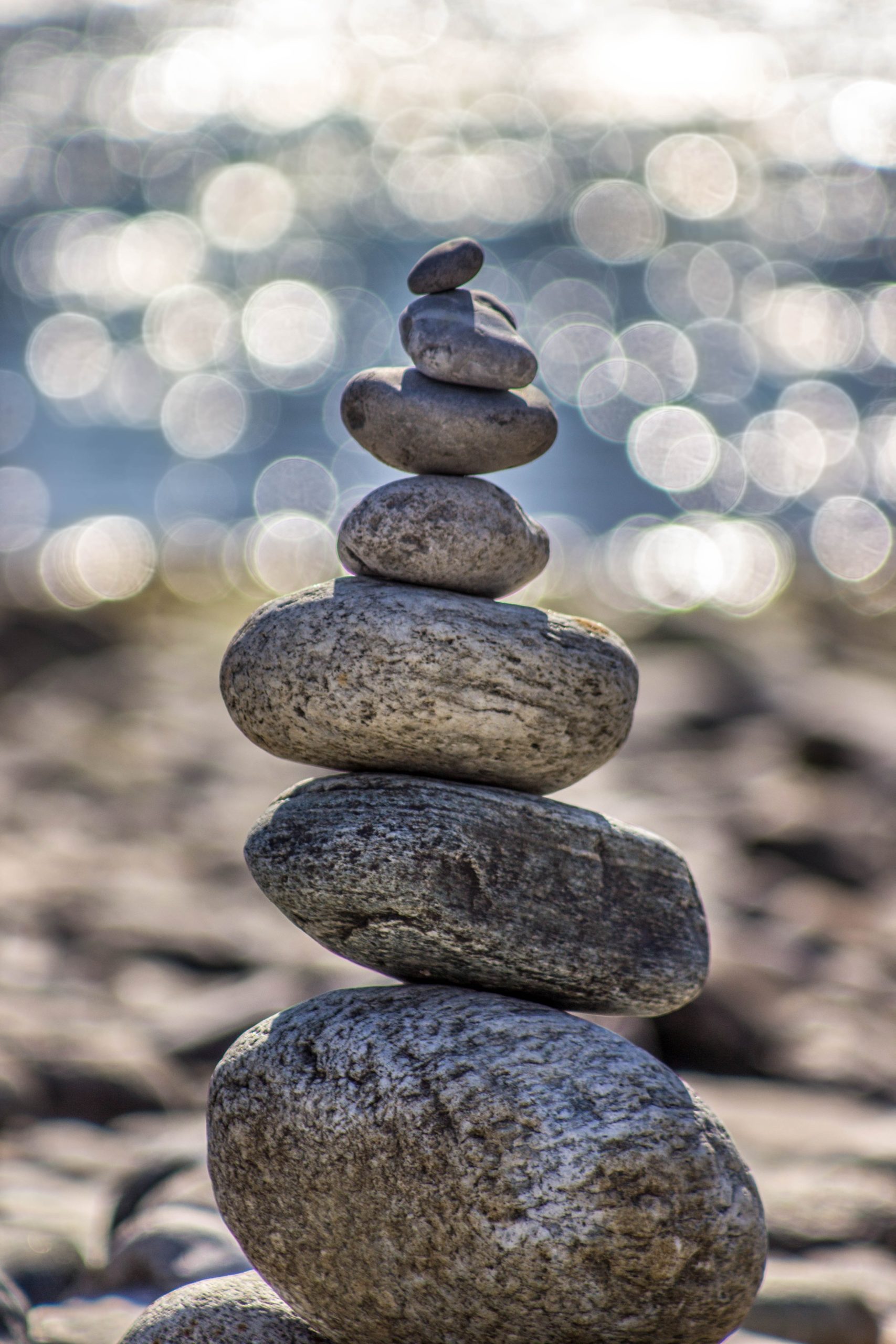 The Berkeley Lab Mindfulness meditation group gathers twice a week, every Mondays at 12pm and every Friday at 11am virtually via Zoom. (Zoom link: https://lbnl.zoom.us/j/227859147)
The Berkeley Lab Mindfulness meditation group gathers twice a week, every Mondays at 12pm and every Friday at 11am virtually via Zoom. (Zoom link: https://lbnl.zoom.us/j/227859147)
The group brings together a diverse group of participants, who meditate together for about 45 minutes. We asked a few of them what they seek in meditation and what they have found in their practice of mindfulness meditation. You will read some of their answers throughout.
The practice of meditation
Meditation has recently gained a lot of traction, just as we are increasingly tied to our devices and with so many modes of distraction related to the tools we use for work: email, text messages, slack, meeting reminders, notifications, and Zoom meetings. “I started meditation a few years ago, using apps such as ‘Headspace’,” explains Eva Nogales, from the Biosciences Division, adding “Those apps are a good introduction to meditation, but there is a lot more value in group meditation.”
The practice of group meditation helps you carve out some time during the week and create a routine, especially helpful when every hour at home can look the same. “It also brings group support – It is nice to see a group of scientists doing it” says Bin Yu, from the departments of Statistics and EECS, on campus. “Interestingly, this benefit stayed the same after the pivot to online meditation via Zoom,” complements Nogales.
(Photo by Deniz Altindas on Unsplash)
Looking at how your mind works
It is often thought that meditation is about clearing the mind and thinking about nothing – but this can be a misconception. The group practice centers around three base concepts: concentration, sensory clarity, and equanimity. Concentration is the ability to keep your mind on what is deemed relevant for the duration you have set out. It is also the ability to ward off distractions by remaining focused. Sensory clarity is the ability to clearly distinguish which sensory components are present. It is tracking the sights, sounds, and bodily sensations, whether due to external stimuli, or generated by our minds. Equanimity is the permission for anything to arise without interference. It is being a good listener, a good observer.
“Eventually, learning to meditate is like learning how to drive: initially, you need to pay attention to all the road signs and traffic lights, and all the knobs and buttons in the car, but with enough practice, driving becomes effortless and you do not need to think about your every move.” explains Arthur Montazeri, who leads the meditation sessions, a former postdoc at the lab who left after starting a company, but continues animating the group. Still, sometimes doing nothing is not as easy as it sounds, he continues, “If during a meditation session you can find a comfortable state of rest for even five seconds, allow yourself to call it a great success.”
While most participants only practice meditation during the group sessions, a regular practice unlocks many more benefits. If you are learning to drive for the first time, practicing two hours a week is great, but only after you venture into a few great road trips that you and driving really click!
With practice, you can drop into a meditative state, and then it all happens. This kind of state is often described by athletes as “The Zone,” a state that may feel familiar to some scientists or artists also, when their mind starts generating new ideas in rapid succession, seemingly out of nowhere.
The science of meditation
While there are grand claims that meditation can physically change your brain, it is still a bit hard to pin down exactly where and by how much: the observed effects are comparison of meditating and non-meditating groups, rather than tracking individuals over their practice of meditation, which takes years or even decades.
Mindfulness meditation is one kind of meditation among many, but it happens to be one of the most studied, as it is at often the core of mental health practices such as Mindfulness-Based Stress Reduction or MBSR. Mindfulness is a secular, well-articulated, and easily accessible practice to most and as such it meshes with science particularly well.
Certain types of meditation can veer into the esoteric, but not necessarily so. “I have learned meditation as part of spiritual exercise,” tells Gwojen Fung, a construction project manager at the lab. “What I like about Arthur’s approach is that he brings a scientific perspective, explaining what we’re doing as we go.”
The particular practices the group follows are inspired by Shinzen Young, who after teaching mindfulness for nearly five decades, now runs the SEMA lab at Arizona State University, studying the effect of various technological interventions to induce and enhance mindfulness states.
Finding balance and fulfillment
Meditation improves focus, by being conscious of the present, and exploring  the workings of the mind, by simply observing the sensory experience and how our thoughts arise. “Like watching a movie and having your mind connect the dots, and once in a while there is that a-ha moment” says Montazeri.
the workings of the mind, by simply observing the sensory experience and how our thoughts arise. “Like watching a movie and having your mind connect the dots, and once in a while there is that a-ha moment” says Montazeri.
“Nowadays, resources are limited; we should seek more balance, not always growth” says Bin Yu, a professor of statistics on campus. While the pandemic might have slowed personal progress in some ways causing personal anxiety, it may have freed up some more time to seek personal fulfillment. Mindfulness meditation may help restore balance and let us explore deeper into ourselves and fight off stress, and maybe even gain insight into the nature of stress. “Lots of people are under duress, and everyone who needs it should take advantage of the generosity of Arthur” suggests Yu.
Meditation in times of Covid
The shift to remote working has upended many of our habits, such as commute or coffee break with colleagues, and brought inadvertent diversity in our lives. “When working from home, all day, every day, everything looks the same” says Nogales. “Meditating helps me make sense of time,” she explains. The routine aspect of the practice can in itself be beneficial and help recover the lost transition between personal and professional life: “the meditation sessions bookends my week.” complements Fung.
“In the beginning of the pandemic, I rearranged my commute time into a meditation time. I would sit and could hear the birds chirping,” tells Nathalie Elisabeth, a research scientist in biology. “For some people, it seems that the pandemic has been a blessing: they get the time for introspection handed to them.” says Montazeri.
Mindful in what you do
 One goal of meditation is to achieve a state of flow, where everything you do becomes a meditative exercise, automatically. But before you get there, there are a lot of activities that complement meditation.
One goal of meditation is to achieve a state of flow, where everything you do becomes a meditative exercise, automatically. But before you get there, there are a lot of activities that complement meditation.
Walking and letting your mind wander can be one, or taking care of the plants in your apartment or in your garden. “I try to bring mindfulness into my daily routine, when I fold my clothes for example” says Elisabeth. She adds: “And I try to see everything as if it was new – the same way my young daughter looks at things in the world: with curiosity”.
Most of us probably haven’t been to a music concert or visited a museum in a year, but the connection with an audience or walking between pieces is also a form of meditation, when you are present. Nogales recalls the last exhibition she saw, about the French painter Tissot: “his paintings evoke an emotion.” “Rivals” by J. J. Tissot (copyright Star Sainty),
Karen Lingua, a Procurement Manager supporting the Lab’s major projects, and a group meditation member, has a particular knack for Van Gogh’s Almond Blossoms – and there are many trees blossoming in our streets nowadays. She also finds joy in listening to the Buena Vista Social Club, while following the Yerba Buena social distancing guidelines. “I can’t wait to go back to Freight and Salvage!” she adds.
The Berkeley Lab Mindfulness meditation groups gather every Mondays at 12pm and every Friday at 11am. Participation is free and open to all – beginners welcome!
Zoom link: https://lbnl.zoom.us/j/227859147
You can join the mailing list here: https://groups.google.com/a/lbl.gov/d/forum/mindfulness/join
Thanks
The author Antoine Wojdyla would like to thank Bin Yu, Eva Nogales, Gwojen Fung, Arthur Montazeri, Karen Lingua and Nathalie Elisabeth for sharing their experience and insights on meditation.
Disclaimer
While meditation is useful to cope with anxiety and stress associated with the current situation, it is not a substitute mental health care. If you are facing challenging times, please seek proper care through your healthcare provider.
Here is a Scientists’ Primer On Mental Health, provided by Dragonfly Mental health
Resources
LBNL mindfulness website: https://sites.google.com/lbl.gov/mindfulness
